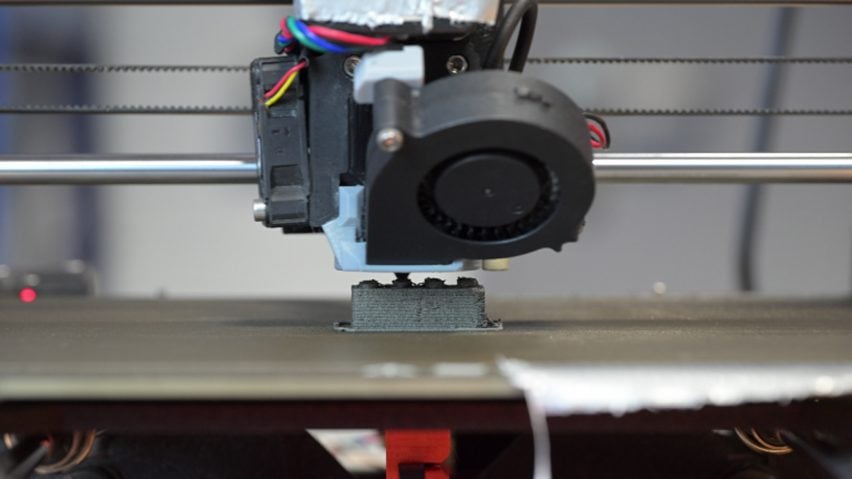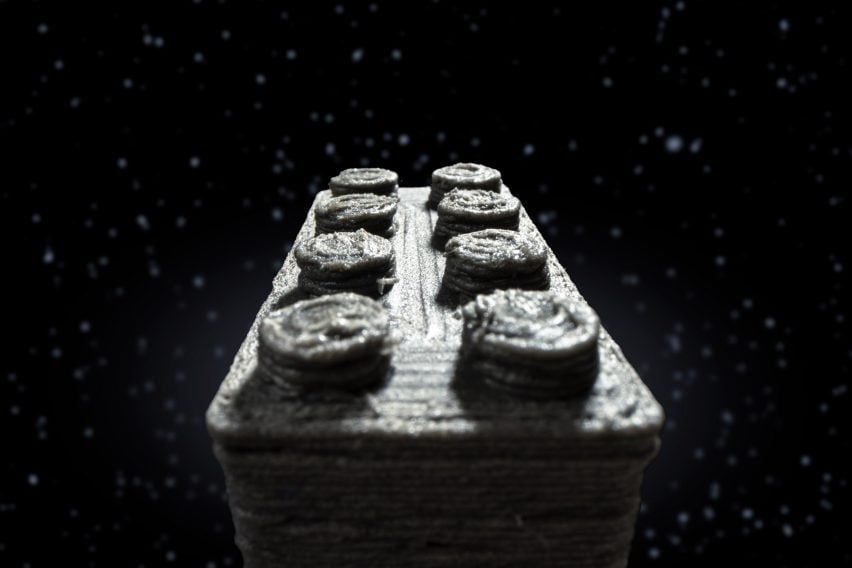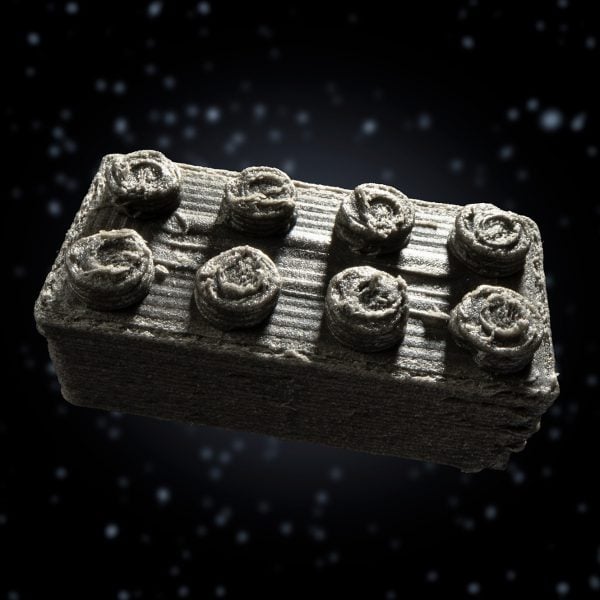The European Space Agency ESA has created its own version of a Lego brick that is 3D printed from meteorite dust. The organization is using it to investigate how buildings can be built in space.
The “space bricks,” as Lego and the European Space Agency (ESA) call them, are made from the dust of a 4.5 billion-year-old meteorite discovered in northwest Africa in 2000.
The meteorite dust acts as a substitute for lunar regolith: the loose material covering the moon’s surface that is largely the result of meteorite impacts.
Since only a small amount of regolith exists on Earth (samples brought back during the Apollo missions), the scientists chose the closest alternative they could find.
The development of the space rock is part of ESA’s contribution to the international Artemis programme. This programme not only aims to return astronauts to the moon, but also to establish a lunar base there.
Because it is too expensive and time-consuming to bring materials from Earth, it is hoped that moon rocks can be used to build structures such as launch pads and habitats.

In the field of space exploration, this is known as In-Situ Resource Utilisation (ISRU) and is the focus of ESA’s Spaceship EAC team, based in Cologne, Germany.
Aidan Cowley, ESA scientist and head of the lab, said his team loved “creative constructions” and came up with the idea of investigating whether space dust could be shaped into a small block similar to a Lego brick, so they could test different building techniques.
“Our teams are working on the future of space exploration, taking inspiration not only from what’s above us, but also from what we can find on Earth,” Cowley said.
“No one has ever built a structure on the moon, so we have to figure out not only how to build them, but also what to make them from. After all, we can’t bring any materials with us.”
To create a material suitable for 3D printing, the team ground up pieces of meteorite into dust and mixed it with a small amount of polylactic acid, a type of biodegradable bioplastic, and a “regolith simulant,” a mixture of earth minerals intended to mimic the composition of the lunar surface.
According to the ESA, their design approaches the shape and size of Lego bricks, although precision at this scale is difficult to match with 3D printing and will require a lot of fine-tuning.
According to the team, the shapes of Lego bricks have therefore become “a widely used test for these types of projects.”

The blocks also work on the same principle as Lego, with tubes on the bottom of the bricks interlocking with studs on the tops of the bricks below. This connection system creates the “clutch power” that makes Lego bricks famously hard to pull apart.
“The result is stunning and while the bricks may look a little rougher than normal, it’s important that the bonding force still works, allowing us to experiment and test our designs,” Cowley said. “It’s been both fun and useful to understand the limits of these techniques scientifically.”
The Lego Group has now put 15 of ESA’s space bricks on display in its stores around the world, saying it hopes to inspire children to build their own space habitats.
The Artemis program has been running since 2017, and a manned moon landing is planned for late 2026. As part of the program, construction company ICON has also worked on 3D printing technology for the moon, fashion house Prada has designed spacesuits, and Lockheed Martin, General Motors and Goodyear have developed a lunar rover.
